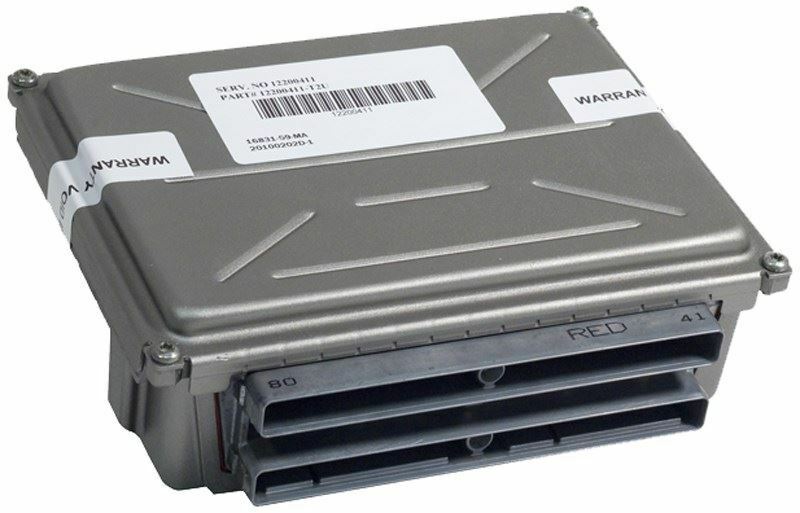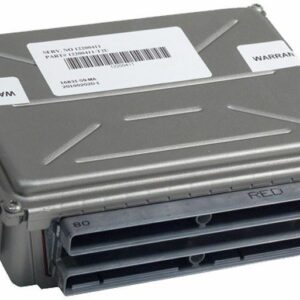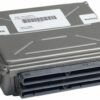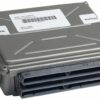Restore Peak Performance to Your GM Truck or Van
As a technician with over two decades of experience under the hood, I’ve seen firsthand how a failing Powertrain Control Module (PCM) can turn a reliable workhorse into a source of constant frustration. If your 2003 Silverado 2500 is suffering from a persistent Check Engine Light, erratic shifting, poor fuel mileage, or a no-start condition, the PCM is often the culprit. This isn’t just a part; it’s the central computer of your vehicle, responsible for managing everything from fuel injection and ignition timing to transmission shifting. When it falters, the symptoms can be confusing and widespread.
This replacement PCM, part number 89017733, is the definitive solution to get your truck running right again. The biggest hurdle with replacing a PCM has always been the expensive and time-consuming programming required at a dealership. We eliminate that step entirely. Before we ship this module to you, our specialists will program it with the latest official GM software updates, specifically matched to your vehicle using its unique Vehicle Identification Number (VIN). This means it arrives at your door ready for a straightforward installation, saving you time, money, and a trip to the service center.
From the Diagnostic Bay
I remember a 2003 Sierra 2500 with the 8.1L that came into my shop with a maddening intermittent stalling problem. No codes, no clear pattern. The owner had already replaced the fuel pump and crank sensor. After hours of diagnostics, we hooked up a scope to the PCM’s 5-volt reference circuit and saw it intermittently dropping out. It was a classic case of an internal PCM failure that a standard scan tool couldn’t catch. We installed a VIN-programmed module just like this one, and the truck ran flawlessly. It’s a reminder that sometimes the ‘brain’ itself is the problem, and a direct replacement is the only true fix.
Is Your Truck Showing These Symptoms?
A failing PCM can manifest in numerous ways. If you’re experiencing any of the following, this module is likely the solution you need:
- ✔ Check Engine Light is on with communication codes like U0100 or internal processor codes like P0601, P0604, or P0606.
- ✔ The engine cranks but refuses to start.
- ✔ Harsh or erratic automatic transmission shifting.
- ✔ A sudden, unexplained drop in fuel economy.
- ✔ The vehicle stalls for no apparent reason, either while driving or at idle.
- ✔ Failure to pass an emissions test.
A Straightforward Guide to Installation
With the programming already handled, installation is a job a confident DIYer can tackle. While specific steps may vary slightly by model (e.g., van vs. truck), the general process is the same.
- Safety First: Disconnect the negative terminal from your vehicle’s battery and secure it away from the post.
- Locate the PCM: On most trucks like the Silverado/Sierra, it’s under the hood on the driver’s side, near the battery. On Express/Savana vans, it’s typically in the LH rear of the engine compartment.
- Disconnect the Connectors: Carefully unclip and remove the wiring harness connectors from the old PCM. These connectors have locking tabs that need to be released. Avoid forcing them.
- Remove the Old Module: Unbolt the old PCM from its mounting bracket and remove it from the vehicle.
- Install the New Module: Mount your new, pre-programmed PCM onto the bracket and securely re-fasten the bolts.
- Reconnect Everything: Plug the wiring harness connectors firmly into the new PCM until they click into place. Reconnect your negative battery terminal.
- Perform Security Relearn: You will need to perform a simple security relearn procedure (often called a CASE relearn) to sync the new PCM with your vehicle’s anti-theft system. This typically involves turning the key to the ‘ON’ position for 10-15 minutes and can be done without special tools. Instructions are readily available online for your specific model.
Verified Vehicle Compatibility
This module is a direct replacement for a wide range of GM vehicles. Please verify your vehicle is on this list. It is a compatible replacement for service numbers: 12581565, 8125815650, 12570557, 12570558, 12576106, 12576869, 12578127, 88864822, and 89017733.
- 2003 Avalanche 2500 (LH front under battery)
- 2003 Astro / Safari (GMC) (LH front by battery)
- 2003 Blazer S10 / Jimmy S15 (RH front engine compartment)
- 2004 Cadillac CTS (Base, ID 12581565)
- 2004 Corvette (ID 12581565)
- 2003 Express / Savana 1500, 2500, 3500 Van (LH rear engine compartment)
- 2003 S10 / S15 / Sonoma (4.3L, RH front engine compartment)
- 2003 Sierra / Silverado 1500 Pickup (4.3L, LH front under battery)
- 2003 Sierra / Silverado 2500 Pickup (8.1L Gasoline, LH front under battery)
- 2003 Sierra / Silverado 3500 Pickup (8.1L Gasoline, LH front under battery)
- 2003 Suburban 2500 (8.1L, LH front under battery)
- 2003 Yukon XL 2500 (8.1L, LH front under battery)
Frequently Asked Questions
Frequently Asked Questions
How do I provide my VIN for programming?
After you complete your purchase, simply send us a message with your 17-digit Vehicle Identification Number (VIN). We cannot ship the module until we receive this information.
Is this a plug-and-play part?
Almost. Because we pre-program it to your VIN, it eliminates the need for dealer programming. However, you will need to perform a simple security relearn procedure after installation, which takes about 10-15 minutes and requires no special tools.
Will this fix my specific problem?
This module corrects issues directly caused by a faulty PCM, such as internal processor errors (P0601), communication faults (U0100), and erratic engine/transmission behavior. While it’s a common failure point, always ensure your vehicle has been properly diagnosed.
Where is the PCM located on my 2003 Silverado 2500?
On the 2003 Silverado 2500, the Powertrain Control Module is located in the engine bay on the driver’s side, typically mounted to a bracket just below and behind the battery.
Does this module come with the newest software?
Yes, we program every module with the latest stable software release available from GM for your specific VIN. This ensures optimal performance and can resolve issues that were present in the original factory programming.



